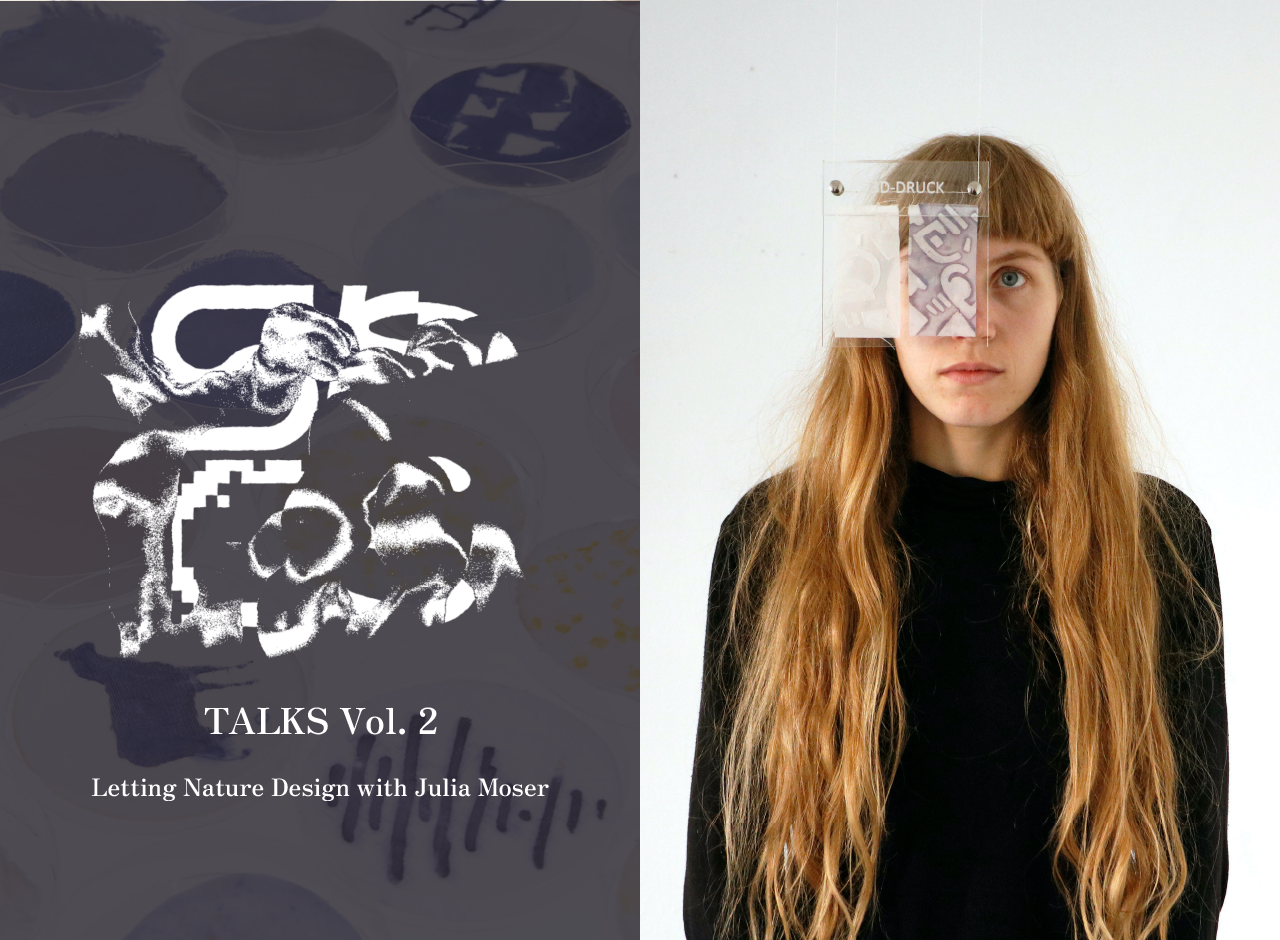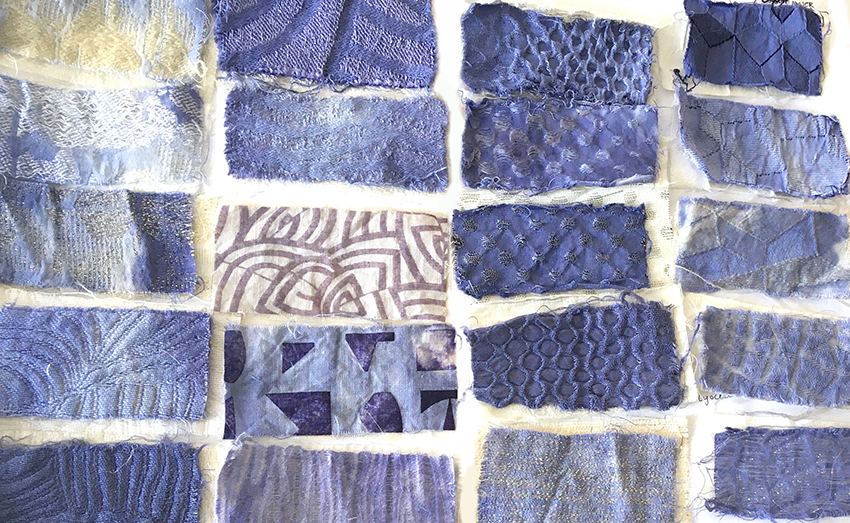Online Event
- #Finished
- #英語で開催

Bacteria are often feared but what if we worked with bacteria instead of trying to eliminate them? Julia Moser has been researching the use of bacteria to produce pigments for textiles. Join us to find out how she paints and constructs her garments with living pigments.
Fri, March 31, 2023 UTC+09:00
19:00 – 20:00
Online Session
40
Free
Biodiversity is a key factor in preserving the balance of our environment. Yet the speed at which species are heading for extinction has increased since the 1970s. In merely 30 years, 68% of all species on earth have gone extinct. And today, an estimated 100 species go extinct daily. Even if we call for more conservation efforts, humans rarely change their behavior. How should we then rebuild the biodiversity in our ecosystems while fulfilling human needs and tailoring to the human ego? For that purpose, the practices we have taken for granted have to be re-evaluated, and we propose adopting a new mindset that allows nature to take its own course.
SPCS is a community that explores new ways of partnering with non-human species instead of trying to control them. Here, we introduce trailblazers who have found unique ways to approach what others would consider as ‘errors’ or ‘unruly’ in nature, or creators who are devising new methods of co-creation with nature that will still satisfy human needs.
Each session will feature speakers who are experimenting in various fields, and will be recorded and shared online in an archive. For sessions which are held offline, we also set aside time for participants to mix and interact. We hope that this will birth new collaborations among participants from diverse backgrounds.
Bacteria are often feared as harbingers of disease and infection. We are more often trying to eradicate them rather than celebrate them. Yet, these misunderstood organisms are everywhere around us, playing vital roles in our ecosystem.
What if we worked with bacteria instead of vilifying them? We’ve already done so for hundreds of years, roping them in to make yogurt and pickles. Now we’ve found that they can also dye textiles, a promising solution for one of the most pollutive industries in the world.
Julia Moser has been researching the use of bacteria to produce pigments that can stain fabric. Instead of simply creating an alternative dye, she experiments with growing bacteria directly on textiles, allowing them to co-design the pattern of each piece.

Making the invisible visible – cultured bacteria producing bright and varied pigments.
Growing Colors | JKU LIT @ Ars Electronica 2021
Through her project – Growing Patterns Living Pigments, she shows the possibilities of using bacterial pigments for dyeing textiles in different colors, shapes and patterns and illustrates the presence of bacteria in our environment by making their colors visible. The combination of this resource-saving and environmentally friendly dyeing method with new technologies opens up completely new possibilities to make the world not only more colorful – blue, yellow, or red – but also a bit “greener” and thus more sustainable.
In a cut-throat industry focused on mass-production with little regard for the environment, how do we make space for nature to design and create alongside us? Whether it’s letting growth patterns decide the shape of a garment’s pattern-cutting, or programming her knits based on the growth of bacteria, Julia’s working relationship with non-human organisms is definitely more cooperative than exploitative.
Join us as we talk with Julia to learn more about bacterial dyeing and co-creating with living organisms as we explore a new future for the fashion industry.
-

Fabric stained by bacteria, managing to achieve dyed patterns. (Credits: Julia Moser)
-

Yarns dyed with bacteria to use for knitting or weaving later on (Credits: Julia Moser)

An alternative, cyclical approach to garment production proposed by Julia. (Credits: Julia Moser)
Related Events
This online talk is held in conjunction with the following event –
EXHIBITION by Julia Moser “Making Visible the Invisible” – Textile dyeing with Bacteria
Come down to FabCafe Kyoto to view samples of bacteria dyed textiles and garments in person!
・Dates: 2023.03.31(fri) – 2023.04.08(sat)
・Admission: Free
・Venue: FabCafe Kyoto(京都府京都市下京区本塩竈町554)
◎ More details here: https://fabcafe.com/en/events/kyoto/202303-bacteria-dye
- Textile and textile dyeing enthusiasts and students interested in new sustainable production methods.
- Textile and textile dyeing manufacturers who are interested in experimenting with biological elements or exploring new materials for dyes.
- Biotechnologists who are looking for new interpretations and use cases for their work in biology.
- Fashion / craft / science educators looking for new cross-disciplinary material to introduce in their curriculum.
- Fibro-science researchers who are interested in what is happening in the global landscape.
Date
31st March 2023(Friday)19:00-20:00
Participants
40
Admission Fee
Participation is free ※ Online viewing post-event will be free
Location
FabCafe Kyoto(京都府京都市下京区本塩竈町554)
Organizer
FabCafe Kyoto / Loftwork Kyoto
To note
- If there are too many sign-ups, there may be a possibility that we choose participants through a raffle. We ask for your understanding on this matter.
- Photos of participants and the event may be uploaded to the FabCafe Kyoto/Loftwork.com website at a later date
- We reserve the right to change this program with no prior notice.
Microbiomes, radiation, viruses, bacteria – these uncontrollable forces of nature are often dismissed as errors or dangerous. However, can we reclaim the view of this uncontrollable biodiversity and propose a new positive way of creatively designing for and with these ‘errors’? That is the purpose of the community SPCS.
SPCS is a program that explores new ways of co-creation with nature through prototyping. “In what ways can we work with the uncontrollable power of nature and design systems that promote creativity?” Is our guiding question. Each season, we invite lecturers from different fields to carry out practical workshops. Instead of manipulating nature for our human needs, we explore a co-creationary approach. We encourage a speculative output formed by each participant’s curiosity towards biological mechanisms.
Activity Concepts / Past activities >>
SPCS|A Community Exploring Biological Design
-
Julia Moser
Textile & Fashion designer / Founder of Growing Patterns Living Pigments
Julia Moser sees her mission in re-thinking fashion and textile design practices and production processes towards a more sustainable and healthier future. Following the fact that nature knows how to produce colours without chemicals and harmful ingredients, she founded “Growing Patterns Living Pigments” and started to co-create with pigment producing bacteria – dyeing textiles and involving them in the design process as well. With a focus on material innovation and bio design, she uses new technologies to find alternative ways of thinking design and design processes. Always remembering the indigenous tribe of the Kogi saying “You’re meant to work with technology, but if you do so, use technology that works with and not against nature”.
Moser holds two Master degrees in textile.art.design and Fashion&Technology from the University of Art and Design Linz where she currently works as a University Assistant at the Crafting Futures Lab. There she works on her PhD and guides students to find their core values for their design practice, creating a connection to materials and building a bridge between art and science, traditional and new technologies and regaining a connection to nature to create a future for the generations coming after us.
Julia Moser sees her mission in re-thinking fashion and textile design practices and production processes towards a more sustainable and healthier future. Following the fact that nature knows how to produce colours without chemicals and harmful ingredients, she founded “Growing Patterns Living Pigments” and started to co-create with pigment producing bacteria – dyeing textiles and involving them in the design process as well. With a focus on material innovation and bio design, she uses new technologies to find alternative ways of thinking design and design processes. Always remembering the indigenous tribe of the Kogi saying “You’re meant to work with technology, but if you do so, use technology that works with and not against nature”.
Moser holds two Master degrees in textile.art.design and Fashion&Technology from the University of Art and Design Linz where she currently works as a University Assistant at the Crafting Futures Lab. There she works on her PhD and guides students to find their core values for their design practice, creating a connection to materials and building a bridge between art and science, traditional and new technologies and regaining a connection to nature to create a future for the generations coming after us.
Organizer
-
FabCafe Kyoto / Loftwork Kyoto
-
Date & Time
-
Fri, March 31, 2023 19:00 – 20:00 UTC+09:00
-
Venue
-
Online Session
-
Fee
-
Free
-
Capacity
-
40
-
Organizers & Sponsors
-
Organizer: FabCafe Kyoto / Loftwork Kyoto





